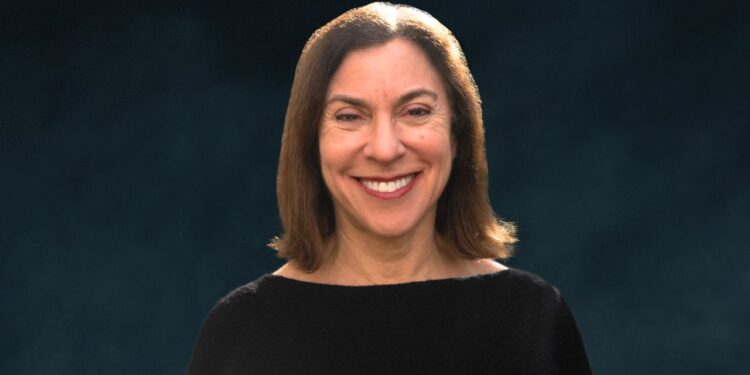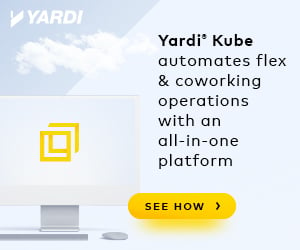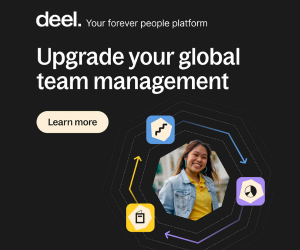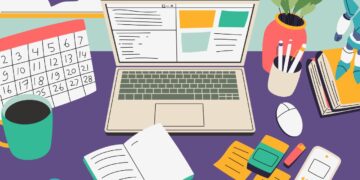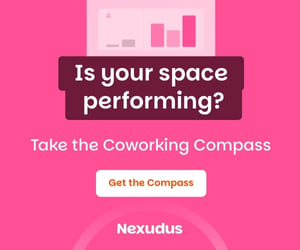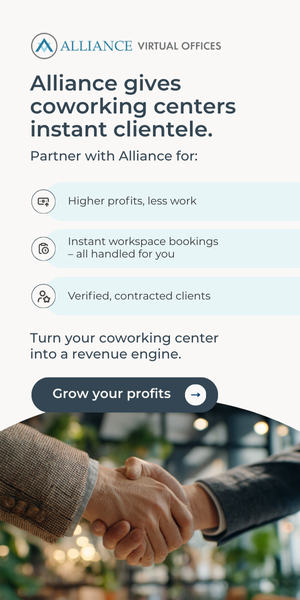The Cost of Distraction: How Multitasking Impacts Our Productivity and Well-Being
Have you ever wondered why your productivity seems to falter despite spending hours glued to your screen? In this episode, we spoke with Dr. Gloria Mark Chancellor’s Professor Emerita at the University of California, a leading researcher on attention spans and digital habits.
For over two decades she has researched the impact of digital media on people’s lives, studying how using our devices affect our multitasking, distractions, mood and behavior.
Her recent book Attention Span: A Groundbreaking Way to Restore Balance, Happiness and Productivity was named by The Globe and Mail as the #1 Best Business and Management book of 2023.
Together, we explored how our ever-shrinking focus affects our lives and what we can do to reclaim it.
The 47-Second Reality
We began by confronting a startling statistic: the average attention span on screens today is just 47 seconds, a dramatic drop from the 2.5 minutes recorded two decades ago. This rapid task-switching isn’t just a minor inconvenience—it has measurable consequences.
What happens when we constantly switch tasks?
- More mistakes: Frequent switching increases error rates.
- Wasted time: The “switch cost” delays task completion as we reorient ourselves repeatedly.
- Heightened stress: Rapid switching triggers physiological responses, raising stress levels and impacting overall well-being.
Dr. Mark likened our attention to a “tank of cognitive resources,” which drains with every unnecessary switch.
Why Multitasking Is Draining Your Energy
Dr. Mark debunked the myth of multitasking as a productivity booster. Instead, she shared insights into how it depletes us:
- Mental fatigue: When our “cognitive tank” is empty, distractions are harder to resist.
- Stress overload: Measured in studies with heart rate monitors, task switching correlates directly with increased stress.
A standout moment came when Dr. Mark described how our constant toggling diminishes enjoyment in both work and leisure. By switching between tasks, like answering emails while watching Netflix, we dilute the satisfaction from both activities.
Strategies to Take Control of Your Attention
Dr. Mark offered actionable solutions for reclaiming our focus:
- Meta-awareness: The Power of Noticing
Pay attention to your habits. Do you instinctively reach for your phone during lulls? Pause and ask, “Why am I switching right now?” Building this self-awareness can help you make more intentional choices.
- Embrace Breaks Wisely
- Step outside for 20 minutes in nature—research shows this can reset your focus and boost creativity.
- Swap screen time for a hands-on activity, like journaling or creative writing.
- Visualize Your Future Self
Picture yourself at the end of the day. Are you relaxed and satisfied with your accomplishments? Use this mental image to guide your daily actions and avoid unnecessary distractions.
Aligning Work with Your Attention Rhythms
When it comes to structuring your day, timing matters. Dr. Mark shared that most people experience peak focus in mid-morning—around 10 AM. Use this golden hour for your most demanding tasks, and reserve less intensive activities, like checking emails, for other times.
Redesigning the Workplace for Better Focus
If workplaces could change one thing, Dr. Mark suggests implementing designated “quiet times.” These 20-minute breaks would allow employees to recharge their cognitive tanks, improving overall productivity and well-being.
Links to Keep Learning
Dr. Mark’s book, Attention Span: A Groundbreaking Way to Restore Balance, Happiness, and Productivity, offers even more insights. You can also explore her Substack, The Future of Attention, for weekly tips on reclaiming focus.
Final Thoughts
This episode reminded us that we don’t have to accept distraction as the norm. By understanding the science behind our attention spans and implementing small, intentional changes, we can reclaim our focus and thrive in a world designed to steal it.
Let’s start by asking ourselves: Where is our attention going, and how can we better protect it?
To hear the full conversation on The Future of Work Podcast, click on the player above, or find The Future of Work Podcast on
Apple Podcasts, Spotify, or anywhere you listen to audio.
What follows is the transcript of the full episode.
Daniel Lamadrid [00:01:00]:
Dr. Gloria Mark, welcome. Thank you so much for being here with us.
Dr. Gloria Mark [00:01:03]:
Thank you so much for having me.
Daniel Lamadrid [00:01:06]:
I am really, truly honored to be speaking with you. As I was mentioning before we started the recording, the topic that we’re going to talk about is something that I really relate to in my daily life. The whole situation of multitasking, task switching, attention spans. That’s something I deal with or struggle with in my everyday life as someone who lives with adhd. But I’m sure that a lot of professionals out there, especially in the world that we’re living in, this digital age, attention spans, as you mentioned in your book, are shrinking rapidly in this digital world that we’re living in. You measured an average attention span of just 47 seconds on a screen. What surprised you most about how quickly and frequently people switch tasks? And what does this mean for productivity in the workplace and overall mental health?
Dr. Gloria Mark [00:02:03]:
Yeah, it’s a big question. What surprised me the most was how fast our attention spans have dwindled. So I started measuring attention spans on screens 20 years ago, and we found them to average about two and a half minutes. And that shocked me at the time because I thought, wow, that’s pretty short. But it really surprised me that after 20 years, people average 47 seconds. We measured this in various workplaces with different populations, also with college students, and others have replicated the work as well. So, you know, others found 44 seconds or 50 seconds, and taking all these studies together averages about 47 seconds. So it. What surprised me was just the speed at which our attention spans on screens just diminished.
Daniel Lamadrid [00:03:09 ]:
It’s funny because in your book you describe how this rapid task switching depletes cognitive resources. 20 years ago, it was two minutes, two and a half minutes or more or less. In today, in today’s world, it’s, it’s averaging on 40 something seconds. What are, what are the negatives about that? Because I believe we can say, hey, someone is spending 47 seconds at most on a screen. But what does that translate into? What are, what are the negatives on that? What did you find?
Dr. Gloria Mark [00:03:46]:
Yeah, so when you’re switching your attention so rapidly, which is called multitasking, actually it hurts performance. So people feel that it’s a badge of honor that they can switch so fast and they feel they can accomplish more, they’re actually accomplishing less. And there’s three ways that, that it’s hurting performance. The first is that people are making more errors. And there has just been decades of research in a laboratory that shows that when people are switching their attention, trying to go back and forth between different tasks, their error rate just skyrockets, it just goes up. And I want to mention that I have been measuring people in the real world. So I don’t just bring people into a laboratory, but I go to where people are and we equip people with sensors. We log computer activity, of course, with their knowledge. So people are very well aware of what it is that we’re measuring. But we find in the workplace also people are making errors. That’s number one. Number two is that it takes longer to perform a task when you’re switching your attention. So if you were to do one task and then finish it, or you stop at a point, a natural break point, then you move to something else, you work for a while, maybe you finish that task, then you start something else. When you work sequentially like that, people actually complete things faster. But when you’re switching, when start working on one task, switch something else, switch back to the first switch to a third. It takes people longer to accomplish any of those individual tasks. And the reason is that it’s called a switch cost. And a switch cost is the additional time above and beyond the actual time it takes to do the work. The switch cost is the time it takes to reorient to any new task. You have to figure out where was I, what information was I using? That’s extra time. And the third reason, the nail in the coffin, is that it increases stress. So when we’re switching our attention very rapidly, that’s associated with stress, and it actually causes stress. It’s not just correlation, but it causes stress. So in the workplace, we’ve had people wear heart rate monitors so that we can measure their stress. It’s called heart rate variability. And we see the exact time that they’re switching on their screen, they’re switching between different tasks. And we see that when their switching rate goes up, their stress goes up. When they stop switching, they stay focused longer, then their stress level goes back down. We know that there is this relationship. We also know from laboratory studies that when people are switching very rapidly, their blood pressure goes up. There is even a physiological marker that indicates people are stressed. So it, you know, and when you’re stressed, it, especially when you go beyond a certain threshold of stress, it actually makes us perform worse.
Daniel Lamadrid [00:07:37 ]:
So that’s amazing because the, the. Basically the three things that you mentioned are we tend to make more mistakes when we’re multitasking or task switching. We make more mistakes, it causes us more stress. And the third one was the switch cost. It takes us longer. And it’s funny because I’m going to put this into perspective as something that I believe a lot of us do. I used to do this until I discovered what it was actually costing us. Costing me. In this specific example, a lot of professionals tend to be working and doing other things at the same time. Right now, in the world of remote work or working from home, there’s studies even that from home, we’re working, but we’re also doing the laundry, or we’re working and we’re also watching Netflix, we’re working and we’re also doing this. And we think that in doing so we’re performing better or it’s causing us less stress. But it’s completely the opposite. It’s completely the opposite. And you mentioned stress, which can also, in the research I did and wrote about, not only is it stressful, but when we tend to be task switching between two things, working and watching Netflix over time, we find both of these less enjoyable. Does this relate to the stress as well? I think it’s called diminishing returns, hedonic adaptation, something like that. When we’re task switching between two things, therefore, we tend to find these less pleasurable over time. What are your thoughts on that?
Dr. Gloria Mark [00:09:24]:
Well, what’s happening is we have this. Think of it as a tank of cognitive resources or a tank of attentional capacity. And you use that capacity to do things like to focus, or when we have a conversation with someone or you’re thinking hard. But when we’re switching our attention rapidly, that tank of cognitive resources, and I’m using this metaphor of a tank, is draining. And when it drains, we get fatigued and of course that affects our well being. Right. When you’re fatigued, it’s just, it’s not a positive feeling. And so, you know, we want to try to avoid that. We want to try to maintain this tank of very precious cognitive resources. And that’s a good way to think about it, that these resources are precious and we have to very carefully think about how we use them up. And you don’t want to use them up by thrashing around with your attention here and there and trying to figure out where was I and who was I speaking with, what information do I need for this task. That’s just a waste of mental resources.
Daniel Lamadrid [00:10:47]:
And I believe there’s this one statistic. I don’t know if this is the most recent one or you have found another one. Multitasking reduces our productivity by up to 80%. Does that ring true to you? Is it that much, really?
Dr. Gloria Mark [00:11:05]:
Well, that statistic is not for me. And I don’t know where, where it comes from. You know, it depends on the context, you know, depends on the tasks a person is doing.
Daniel Lamadrid [00:11:21]:
But it does reduce performance and productivity.
Dr. Gloria Mark [00:11:24 ]:
At some point it does reduce performance. And exactly how much is reduced depends on the context of what you’re measuring. So I don’t think we could say 80% across the board because, you know, in some cases it might be more, in some cases it might be less. And of course there, there are individual differences as well.
Daniel Lamadrid [00:11:49 ]:
Definitely, definitely in your book. And as we’re talking about it right now, it’s affecting our well being, it’s affecting our performance, our productivity, a lot of things. What practical steps can individuals such as myself, or anyone for that matter take to align their digital habits into, into not making these mistakes and overall change the way they, they, they work or anything for that matter, depending on, on what it is they’re doing.
Dr. Gloria Mark [00:12:25 ]:
Yeah, there, there are things that we can do. And first of all, let me start by saying a lot of things we do when we’re on our devices are automatic habits. So we, you know, I see my phone, I pick it up and swipe it open almost without thinking. It’s a, it’s an unconscious habit. You might see a notification, you click on it. But a lot of habits, in fact, about half the time we interrupt ourselves, we distract ourselves. So I have an urge, let’s say, to check email or to check news or, you know, or to look something up on the web that comes from within me. And we find that happens half the time. So we can’t just blame it on those. You know, notifications, but there’s, there’s a lot within ourselves that, that we can change. And so the first thing, thing that we can do is to become aware of these automatic habits. So how can we do that? So we can practice what I call meta awareness, which is being aware of what we’re doing as it’s unfolding. Something is automatic because we’re just not aware of it happening. But we can learn to, to probe ourselves so that we can start becoming aware when we have these urges to switch, or when we see a notification and click on it, or we see our phones and want to pick it up. And we can probe ourselves and ask ourselves, why do I need to switch? Why do I need to pick up my phone right now? And it’s a way to reflect on our actions and by reflection we can understand why we’re doing things. For me, it’s usually because I am bored or I’m procrastinating or something is too hard. When we can become more conscious of these habits, we can raise them to a conscious awareness. We can become more intentional. And when we’re more intentional in our actions, we can form a plant. And so my plan is usually, hey, okay, I, I’m not going to go on the, the web right now, but I’m going to spend 20 more minutes and I’m going to finish working on this outline, right? And after 20 minutes, I’ll take a break. You know, hopefully I’ll get up and move around. So that’s one thing we can do is, is meta awareness. Another thing we can do is to be aware of when we’re mentally fatigued. And so I talked about this metaphor of having this tank of attentional resources. When these resources drain, we get fatigued. And there is a part of our mind that just does not work very efficiently to be able to filter out distractions. And that’s called executive function. And we rely on executive function to keep us on track and to make sure we don’t go off in different directions. But when we’re tired, this part of our brain just can’t do its job very well. And so it’s, it’s not doing this heroic ability of helping, you know, it’s, you know, like this night that’s battling off the distractions. It just can’t do that. And so the important thing to do, and again, we can do it by probing ourselves, is to be aware of when we’re fatigued or starting to be fatigued and take a break. And the best break is to get up, move around, walk outside, some fresh air. Walking outside is the absolute best break we can take. And research shows that 20 minutes in nature can really reset people. There’s something about the multi stimulation of being outside in nature. You know, there’s different sights and sounds and smells and it, it, it can reset us and we can come back. And I’ve done research that shows people can be more creative after a 20 minute break in nature. Okay, so there’s mental fatigue. Another technique is very good to apply if you’re a person who, you know, has impulses to go on the web or go on social media or read news. And you can do this by coming up with a visualization of yourself at the end of the day. Your future self. Imagine your future self at the end of the day and imagine two things. Where do you want to be, what do you want to be doing and how do you want to feel? And so I imagine myself, let’s say 7:00, I want to be lounging on the couch, I want to be relaxing and how do I want to feel? I want to feel fulfilled that I completed my work and the last thing I want to be doing is still working on that deadline. And I have been there, I have been working through 11pm midnight trying to catch up on deadlines. But if you have this visualization of yourself, it can really help keep you on track. It really works and you know, it works really well for me and other people have told me as well that it works.
Daniel Lamadrid [00:18:25 ]:
That’s amazing because I’ve actually sort of tried because I relate to what you’re saying. I’m that type of person and I still do it, not that much anymore where I’m at 11pm trying to finish work. And I keep telling myself, you never really finish work. So I mean, stop doing it at 11pm but something that I’ve been doing, and I think it’s part of this third strategy that you mentioned, is one hour before bed, it’s no phone, no tv, I grab a book, right? I grab a book and I make myself a warm cup of tea. So that’s my unwinding process from the day. Um, I’m not, I’m not gonna lie and say that I do it every night, but the nights that I do do it, I even wake up with a different mindset, a different perspective because of the. That final hour of my day where it’s no screens, no TikTok, no phone, no email. It, it really is life changing. And, and I believe the strategy that you mentioned, a lot of Our listeners will start implementing. And I for one can vouch that at least this third one and the second one of going into nature really does work. I remember at the beginning of this whole era of post pandemic remote work and such, they started doing this trend of the outdoor meetings, the walking meetings, take meetings outside, walk outside. I got into the trend. I personally didn’t like it. Too much noise, too much traffic, et cetera. But I still do step outside and if I’m having a coffee, I’ll take some sips outside and then go back into this work mode because it really does bring me to focus once again from all these distractions. And I think we live in this world where technology is designed purposely to hijack our attention. Would you agree to that? I mean, tick tock and all these five second videos and content is getting shorter and it’s more content. Even when we’re having fun or searching for dopamine in, in whatever social media platform or content platform on tv, things are just getting shorter. And I think maybe it’s also because of this human situation in which these companies are now aware that we focus less time on whatever thing and so they’re making things shorter. So we can skip on to the next one. What are your thoughts on this?
Dr. Gloria Mark [00:21:12 ]:
No, I think you’re exactly right that there is a design element involved in capturing our attention. But of course we’re complicit too. Like we’re not completely, we’re not just pawns that follow whatever is going on, but we of course develop habits that, and you know, we, we’re so, it’s, it’s both sides, right? You know, tech companies of course are very, very sophisticated in capturing our attention, especially with algorithms. They keep getting more and more sophisticated. But of course we also have urges. You know, we’re used to it. We have these habits, right? So we, we also can get agency. You know, there are things that people can do to reclaim their attention and we’re, we’re not just completely victims to tech companies, but I, but I think people can, can do a lot. But I completely agree with you that content is getting shorter and shorter and it’s not clear what’s driving what. And for all we know, it could be that the content designers themselves are influenced by their short attention spans. So they might be designing it based on what for them seems to be reasonable. So yeah, there’s, there’s a lot of. I, I would say it’s bi directional. Right? We’re, we keep getting used to shorter and shorter content, short you know, short form, content and in fact it keeps coming to us more and more.
Daniel Lamadrid [00:23:01 ]:
Yeah. In your book, you, you talk about attention rhythms, how they naturally ebb and flow throughout the day. How can workplaces structure tasks to align with these rhythms for improved employee well being and productivity?
Dr. Gloria Mark [00:23:18]:
Yeah. So I would say that first of all, it’s important for a person to understand what their own attentional rhythm is. So everyone has their own personal attentional rhythm. It depends on if you’re say an early type or a late type person. Depends on your tasks. But you know, for, we find from our research that most people have an attentional peak in mid morning and then again in mid afternoon. So they don’t come to the workplace, you know, ramped up and you know, immediately dive in, but they, they ease into, you know, a state of focus. So first of all, discover what your own personal rhythm is. You can do it by learning what your chronotype is. Most people have a good sense of what their chronotype is. That means your biological rhythm. And you can also just keep a diary for a few days of the times when you’re most engaged and most attentive. So then here’s what I would suggest. Instead of having a company say, okay, we’re mandating that you do this task at this time and these meetings, people should be able to have the agency to design their day. Asynchronous work, synchronous work, but to, to plan to do those tasks that require the hardest work and the most creativity during those times when our attention is at its peak. And you don’t want to waste those peak times doing email or slack or texting. But you know, and it could be, maybe it’s an important meeting. Okay, then that’s the time to hold it. Now of course people are going to have different peak times. Right. So one size won’t fit all, but it will probably fit most people. So you know, if you can discover when your attentional rhythm is, you want to make sure to set aside time. That’s the time when you’re going to really tackle the most important work. Right. And you know, for some people it is first thing in the morning. They are able to just jump in and be super focused right from the get go. We find that’s not the case with most people, but there are ways to leverage your attentional rhythm. And of course this corresponds with this ebb and flow of attentional resources that we have. Remember this tank metaphor? Sometimes your tank is full, sometimes it’s training.
Daniel Lamadrid [00:26:11]:
Yeah. And I think it was actually, I don’t know if there are studies or you found in your research what time of the day most people are most productive. I’ve seen 10am Is this one magical hour and you said mid morning so it sort of kind of relates.
Dr. Gloria Mark [00:26:27 ]:
Yeah, that, that’s exactly what we did find was 10:00am There you go.
Daniel Lamadrid [00:26:32 ]:
Yeah. And so something that I’m doing right now for example is from 10am to noon I have no meetings. That’s my time to really get my things in order. I am the type of person that does wake up at seven and at seven, ten I’m already working. But as you said I’ve sort of done some introspection and from 7 to before 10 it’s when I’m doing these things that are not really, I won’t say important but it’s when I check my email, it’s when you know these things that don’t require a lot of my creative thinking, creativity and attention. But at 10am is when or when we have company wide meetings, they’re at 10am because this is when normally people have already passed through that phase of seeking the full attention. What’s your peak time? When are you most productive and creative?
Dr. Gloria Mark [00:27:30 ]:
Yeah, for me it is actually around 10am yeah. So I start my day doing smaller tasks and the reason I do them is to get them off my plate because if I don’t I’m going to keep ruminating about these tasks and keep thinking ah, I, I still have to get to this email or I still have to do that. So I, I start my day by clearing my plate. When my plate is clean then I can really dive in and usually that is around 10:00am and you know, some of these smaller tasks, a lot of it is just email, dealing with email unfortunately, but that’s how it is. Or taking calls.
Daniel Lamadrid [00:28:14]:
Yeah, for me it’s a, it’s 10:00am as well, more or less. And then after I eat it’s just, I’m, I’m not a human anymore. After I eat I, I really can’t do anything and then I’m really productive and my attention really is at best come night, come nighttime. At nighttime I’m very productive as well. I believe that during the day I’m just more distracted about the day itself and at nighttime there’s just really nothing to do. If you think about it, it’s dark. So I, that’s, that’s at least in my case. If you could redesign one aspect of the modern workplace to support better attention management, what, what would it be? Looking into the future, what is this one thing that right now either the workplace leaders are failing to do? And how would you change that one aspect? And if there’s more, you’re welcome to say more. But what is one thing that you believe needs to change?
Dr. Gloria Mark [00:29:19 ]:
So I really think that workplaces need to offer a quiet time for employees. And this is, you know, at least 20 minutes would be ideal. And in this quiet time, employees know that they have permission to simply be quiet. What? There is a Japanese expression, yohaku no b, which means the beauty of empty space.
Daniel Lamadrid [00:29:48 ]:
Okay.
Dr. Gloria Mark [00:29:48 ]:
And in this case, empty space means it’s, it’s a time when you’re not doing work, but it’s not really empty because you’re filling it with other things. You’re refueling again, going back to this tank of cognitive resources. It’s a time to build your resources back up. What do you do in this 20 minute period of time? Well, you can go outside and walk in nature. You can contemplate, meditate, do creative writing. You use a different part of your brain than what you use when you’re on your screen, which means do something with your hands. You can do painting or it’s okay listening to music, but using a different part of your brain. But even doing something like journaling or creative writing, that’s also using a different kind of mental process than when we’re on our screens and you know, doing analytical work, which is what most information workers do. So I would say yeah. And, and I would also say that along with that, employees have to communicate their interest in supporting well being of employees because we are in this uber productive world which communicates to everyone. There’s no time to stop, you know, you have to keep going. But you know, there’s a paradox because we’re working so hard and long hours and are we any more productive? No, actually, actually we’re not. Right. So, you know, let’s think about, you know, what we can do in, in the time we have available during the workday to be able to be productive. And the best way to do more is to allow ourselves to pull back for a period of time and do less. And that’s this, you know, this quiet time.
Daniel Lamadrid [00:31:59 ]:
Yes, this quiet time. I think that’s very insightful and we’re nearing the end of our episode. But I have one final question question for you with. With hybrid work and remote work on the rise, as you just mentioned, employees are expected to be more connected than ever. As of right now, companies are mandating return to office. Right. They want People back in the office. And then there’s other companies that are sticking with hybrid work is what we’re seeing will be, will prevail, at least in the coming years. It’s expected that in 2028, 2029, Remot make a comeback. Are you for remote and hybrid work or do you lean more towards office work? And when as we were speaking about attention and productivity, where do you believe that employees really can manage that themselves and be more productive?
Dr. Gloria Mark [00:33:08 ]:
So I am a supporter of hybrid work and here’s why. So I do think it’s important for employees to have that face to face connection with other people. They need that social connection. And we also find, we’ve done a study where we find that motivation is very different when people are working remotely compared to when they’re working in the office. So when you work in the office, you get all kinds of signals from other people, social signals that they’re working hard. And that helps motivate us. Right. And we want to send off signals to other people as well. And it may not be conscious, but we’re doing that and we want to signal, hey, I’m with you. I’m working hard as well. Now when people are working remotely at home, then they have to summon up this motivation on their own and that can be tough. Right. And people have different strategies, but it’s not as easy. Now why do I not advocate going into work every day? Because there is stress involved. There’s the stress of commuting. Right. And so you’re relieving people of some stress and you are helping people with better work life balance when, you know, employers can allow people to spend, you know, at least a couple of days a week at home.
Daniel Lamadrid [00:34:44 ]:
Dr. Goyamark, it’s really been a pleasure having you here and this conversation has been very enlightening and I’m sure our audience will apply these strategies to really be aware of what we’re doing in the workplace and where our attention is going to and be more conscious of this tank, which I love that metaphor that you, that you provided. Is there anything else that you would like to add before we go? I will ensure that our audience and within our episode and our episode page, they’re able to get your book, which I found very interesting. And I think it’s a, it’s. It’s a very good read for all of you listeners out there. Anything else you would like to add before we take off?
Dr. Gloria Mark [00:35:35]:
I. I do have a substack where I write weekly about this very topic and it’s called the Future of Attention. And I. I think the listeners would be interested to look at that. For sure. You can find me on substack. The Future of Attention.
Daniel Lamadrid [00:35:56]:
The Future of Attention. And we’ll be sure to link that as well. Once again, thank you so much, and I wish to talk to you again soon.
Dr. Gloria Mark [00:36:04 ]:
Okay, thanks very much, Daniel.


 Dr. Gleb Tsipursky – The Office Whisperer
Dr. Gleb Tsipursky – The Office Whisperer Nirit Cohen – WorkFutures
Nirit Cohen – WorkFutures Angela Howard – Culture Expert
Angela Howard – Culture Expert Drew Jones – Design & Innovation
Drew Jones – Design & Innovation Jonathan Price – CRE & Flex Expert
Jonathan Price – CRE & Flex Expert
